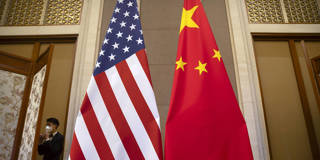David Schenker

Two months into the war in Gaza, Washington continues to support Israel’s campaign against Hamas. While the Biden administration has worked to extend a temporary truce for hostage/prisoner exchanges, it remains opposed to a permanent ceasefire, which Secretary of State Antony Blinken says “would simply leave Hamas in place able to regroup.” Still, with over 17,000 Palestinians dead, a deteriorating humanitarian situation in Gaza, protests proliferating, and U.S. forces in the region increasingly being targeted by Iranian proxy militias, it’s unclear how long the administration will maintain its current position. If the past is prologue, the clock is ticking.
Israeli officials say it will take months to achieve its objectives in Gaza, an ambitious agenda that includes hostage release, the degradation of Hamas’ military infrastructure, and the end of its rule over the territory. Amid burgeoning international pressure to end the war, Washington has encouraged pauses in combat operations, not only to allow the return of Israeli hostages but to facilitate the delivery of critical humanitarian assistance to Gazans. The belief is that increased aid will avert a humanitarian catastrophe, giving Israel more time to continue its campaign in the south. At the same time, the administration is warning Israel that if high Palestinian civilian casualties persist, it could bolster the popularity of Hamas, replacing, as Secretary of Defense Lloyd Austin put it, “a tactical victory with a strategic defeat.”
The Biden administration is taking a beating at home and abroad for its stance. In the aftermath of the brutal October 7 Hamas attack, however, Washington recognizes—in the words of Secretary Blinken—there cannot be “a reversion to the status quo.” Going forward, the challenge for Washington will be to sustain its support for Israeli military operations while preventing a regional war, avoiding diplomatic isolation, and further stressing regional partnerships. Squaring this circle will be no mean feat. In early November, France, which initially backed Israel’s campaign, called for a ceasefire. Yesterday, only the United States voted against a ceasefire resolution in the UN Security Council, with the United Kingdom abstaining.






:quality(70)/cloudfront-us-east-1.images.arcpublishing.com/archetype/MS4SMFSEUNADTNTSGSTZGVRZYA.jpg)










